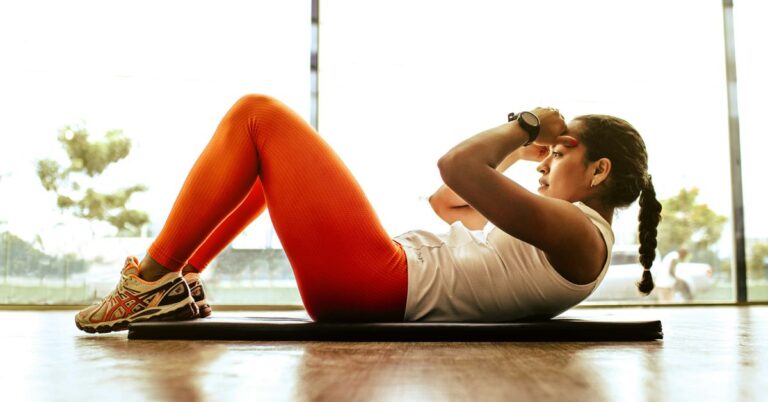Introduction: The Journey to Excellence
Whether you’re a weekend warrior or a seasoned pro, the quest for improvement in your sport is a never-ending journey. I remember when I first picked up a tennis racket; I thought I could simply show up and serve like Serena Williams. Spoiler alert: It didn’t quite work out that way. As much as talent plays a part, rigorous training techniques are what separate the champions from the rest. In this article, we’ll dive deep into essential training techniques that can elevate your game, regardless of your sport.
Understanding Your Sport
Before you can truly elevate your game, it’s crucial to understand the specific demands of your chosen sport. Different sports require different skill sets and physical attributes. For instance, a marathon runner needs endurance, while a sprinter focuses on explosive power. Take a moment to consider what your sport demands:
- Endurance vs. Strength: Consider the balance between endurance and strength. Sports like cross-country running prioritize stamina, while weightlifting emphasizes raw power.
- Speed vs. Agility: Think about how quickly you need to move. Soccer players require both speed and agility, darting in and out of defenders.
- Flexibility vs. Stability: Some sports, like gymnastics, require incredible flexibility, while others, such as football, demand stability to prevent injuries.
By identifying the key components of your sport, you can tailor your training regimen accordingly, maximizing your effectiveness.
1. Setting SMART Goals
Have you ever tried to hit a target without knowing where it is? Setting SMART goals (Specific, Measurable, Achievable, Relevant, Time-bound) can provide the direction necessary for effective training. Here’s how to break it down:
Specific
Instead of saying, “I want to improve my speed,” say, “I want to reduce my 5K time by two minutes.” Specificity creates clarity.
Measurable
Attach numbers to your goals. This could be the number of reps you can perform or the time it takes to complete a workout.
Achievable
While it’s great to dream big, make sure your goals are realistic. Setting the bar too high can lead to disappointment and burnout.
Relevant
Your goals should align with your overall aspirations in your sport. If you aim to compete, your training goals should reflect that ambition.
Time-bound
Lastly, put a deadline on your goals. Whether it’s a month, three months, or a year, having a timeframe gives you a sense of urgency.
For example, I once set a goal to improve my mile time from 8 minutes to 7:30 within three months. It was tough, but having that clear target kept me motivated!
2. Functional Training: The Core of Athleticism
Functional training focuses on exercises that mimic the movements specific to your sport. This type of training can help improve your strength, flexibility, and coordination, all while reducing the risk of injury.
Key Functional Exercises
Here are a few exercises that can be beneficial for almost any athlete:
- Squats: Great for building leg strength and stability.
- Deadlifts: These help develop posterior chain strength, crucial for athletes in many sports.
- Planks: Core stability is essential for balance and power transfer.
- Lateral Lunges: Perfect for sports requiring lateral movement, like basketball or soccer.
By incorporating these movements into your training routine, you’re not just lifting weights; you’re preparing your body for the specific demands of your sport.
3. The Power of Plyometrics
When it comes to explosive power, plyometric training is one of the most effective methods. These exercises involve quick, explosive movements that can enhance your power output and speed. Think of box jumps, burpees, or even clap push-ups.
Why Plyometrics Matter
Plyometrics train your muscles to exert maximum force in short intervals of time. This is crucial for athletes involved in sports like basketball, football, or tennis, where quick bursts of speed and power are essential. Just be sure to warm up properly—injuries can sneak up on you like a sneaky defender!
Sample Plyometric Routine
Here’s a quick routine you might consider integrating into your training:
- Box Jumps: 3 sets of 10 reps
- Clap Push-Ups: 3 sets of 8 reps
- Depth Jumps: 3 sets of 5 reps
- Burpees: 3 sets of 10 reps
4. The Art of Recovery
For some reason, recovery often gets pushed to the back burner. I mean, who wants to take a break when they could be training harder? But here’s the kicker: recovery is just as essential as training. It’s during recovery that your body rebuilds and strengthens itself.
Types of Recovery Techniques
Consider incorporating some of these techniques into your routine:
- Active Recovery: Engage in low-intensity activities like walking or swimming.
- Stretching: Always a classic! Stretching can improve flexibility and reduce muscle soreness.
- Massage: Whether it’s with a professional or a foam roller, muscle recovery can benefit significantly from this.
- Sleep: Never underestimate the power of a good night’s sleep. Aim for 7-9 hours to help your body recover.
It struck me that many athletes overlook this aspect until they’re sidelined by injury. So, listen to your body; it often knows what you need better than you do!
5. Nutrition: Fueling Your Performance
Now, let’s talk about the elephant in the room: nutrition. You wouldn’t put low-grade fuel in a high-performance car, right? The same logic applies to your body. Proper nutrition can significantly affect your training outcomes.
Essential Nutrients for Athletes
Here are some key nutrients to consider:
- Carbohydrates: Your primary source of energy. Think whole grains, fruits, and veggies.
- Protein: Crucial for muscle repair. Look for lean meats, fish, eggs, and plant-based options like beans.
- Fats: Don’t shy away from healthy fats; they’re essential for hormone production and overall health.
And let’s not forget hydration! Dehydration can impact your performance faster than you can say “water break.” Keep a water bottle handy, and drink up—especially during long training sessions.
6. Mental Training: The Mind-Body Connection
Believe it or not, mental training is just as important as physical training. I once thought that as long as I was physically prepared, I was good to go. Oh boy, was I wrong! Mental fortitude can make or break your performance, especially in high-pressure situations.
Mental Training Techniques
Here are a few techniques to help sharpen your mental game:
- Visualization: Imagine yourself succeeding. Picture every detail, from the crowd’s cheers to the feeling of crossing the finish line.
- Mindfulness: Staying present can help reduce anxiety and improve focus during competitions.
- Positive Self-Talk: Replace negative thoughts with positive affirmations. Instead of “I can’t do this,” switch it to “I am prepared and ready.”
7. Cross-Training: Broaden Your Horizons
Cross-training can be a game-changer for athletes, combining different training styles to enhance your overall performance. This can help you build strength, flexibility, and endurance, all while preventing burnout. Who doesn’t want to mix things up a bit?
Benefits of Cross-Training
Here’s why you might want to consider adding cross-training to your routine:
- Injury Prevention: Engaging in different activities can reduce overuse injuries.
- Enhanced Performance: Training different muscle groups can lead to better overall fitness.
- Variety: It keeps your workouts fresh and interesting, reducing mental fatigue.
For instance, a runner might benefit from swimming or cycling on off days. This not only keeps things exciting but also helps in recovery.
8. Consistency is Key
No amount of fancy training techniques will help if you’re not consistent. It’s all about showing up, day in and day out. I once had a coach who would say, “It’s not about how hard you train, but how consistently you train.” Wise words, indeed!
Building a Routine
Creating a sustainable routine can help you stay on track. Here are a few tips:
- Plan Your Week: Set specific training days and times, and stick to them just like you would for any other important commitment.
- Track Your Progress: Keeping a training log can help you see how far you’ve come and what areas need improvement.
- Stay Flexible: Life happens! If you miss a session, don’t beat yourself up; just get back on track as soon as possible.
Conclusion: Your Path to Elevation
As you embark on your journey to elevate your game, remember that improvement takes time, patience, and a willingness to adapt. The training techniques discussed here are not one-size-fits-all solutions but rather tools that can be customized to fit your unique needs. Embrace the process, celebrate small victories, and don’t forget to enjoy the ride!
And who knows? With dedication, you might just find yourself achieving goals you once thought were out of reach. So grab that tennis racket, lace up your running shoes, or hit the gym—your elevated game awaits!









